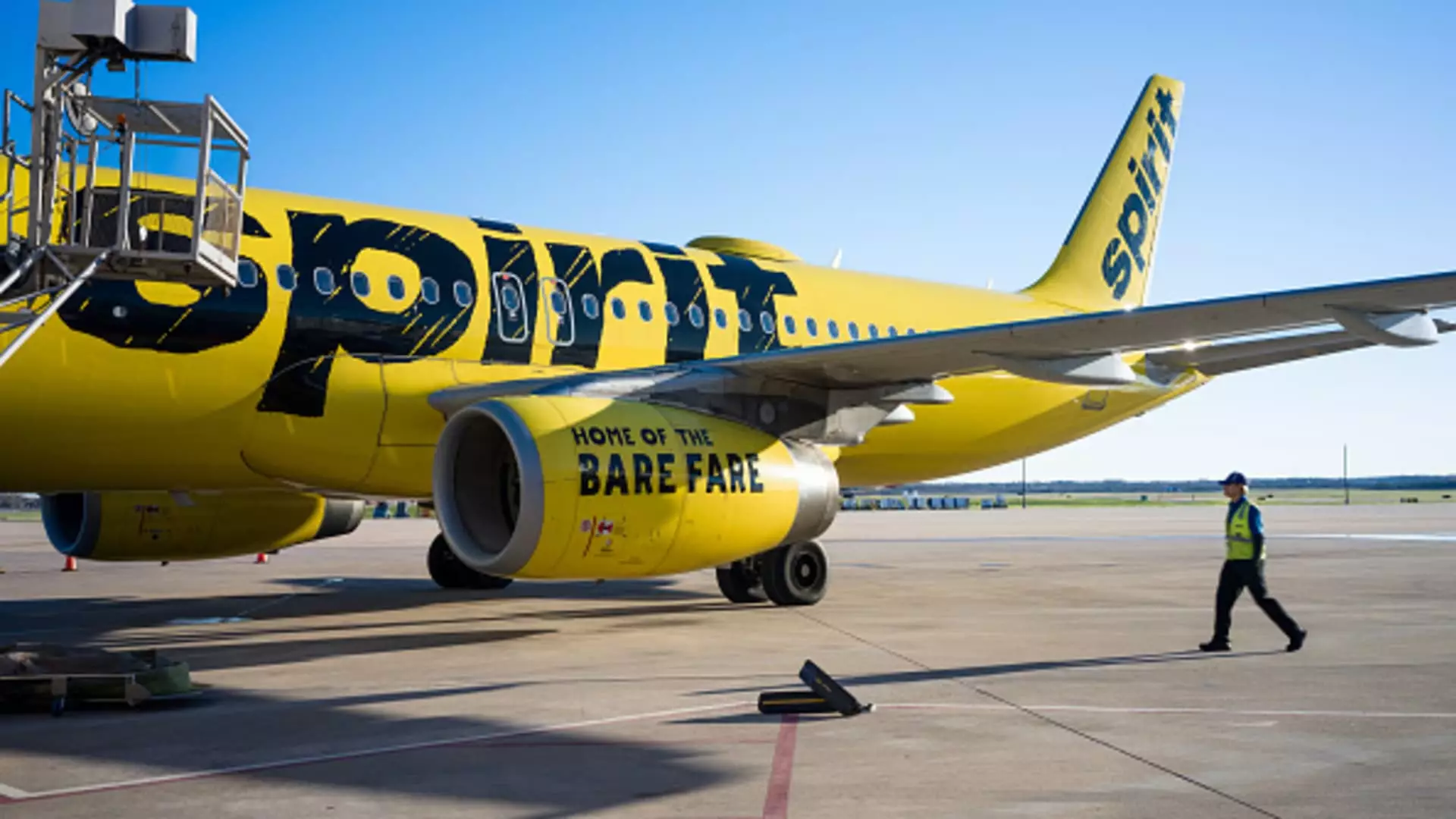In a move indicative of the airline’s ongoing financial struggles, Spirit Airlines earned a temporary reprieve on Friday by finalizing an agreement with its credit card processor, extending its debt refinancing schedule to December. This extension came just hours before the initial deadline was set to lapse, highlighting the precariousness of Spirit’s financial situation. Earlier in the week, the airline drew upon the full $300 million available from its revolving credit facility, raising its liquidity to just above $1 billion as it heads into year-end. This access to cash may provide a lifeline, but the underlying issues remain pressing.
The airline admitted in a recent filing that it continues to engage in “active and constructive discussions” with holders of its senior secured notes due in 2025 and convertible senior notes due in 2026. Despite these dialogues signaling a level of engagement with stakeholders, the uncertainty surrounding these maturities reflects broader concerns regarding Spirit’s financial health. Only a month ago, the deadlines for these negotiations were extended, indicating that while there is an effort to stabilize the situation, the resolution remains elusive.
In the public market realm, Spirit Airlines experienced a significant downturn as its stock price closed at an alarming new low on Friday, dipping approximately 3% to below $1.50 per share. Such a decline is particularly troubling as it symbolizes reduced investor confidence and an overall negative perception of the airline’s stability. The downward trend is especially stark when considering that Spirit’s shares have plummeted over 90% throughout the year, with nearly 40% of that drop occurring just in October. This sharp decline should serve as a warning signal not only for the airline but also for the broader implications it may have on credit and investor relations.
Addressing the challenges posed by reduced cash flow, Spirit has implemented extreme measures. These include furloughing employees, significantly cutting back operational schedules, and deferring aircraft deliveries—all strategies aimed at conserving cash and mitigating losses. Additionally, the airline’s fleet has been impacted by a major recall affecting engines manufactured by Pratt & Whitney, which has further complicated its operational capabilities. The cumulative effect of these operational hurdles underscores the multifaceted crises Spirit faces in its attempts to realign its business model.
Adding to Spirit’s woes, its planned acquisition by JetBlue Airways was recently thwarted by a federal judge’s ruling on antitrust grounds. This legal setback demonstrates the complexities and challenges airlines face not only from the marketplace but also from regulatory oversight. The lack of strategic growth opportunities through acquisitions could stifle Spirit’s recovery efforts, compelling the company to reevaluate its operational framework amidst an increasingly competitive landscape.
The looming question of bankruptcy has been raised as speculation about the airline’s viability persists amidst its financial turmoil. Recent reports, including insights from The Wall Street Journal, have suggested that the carrier is seriously considering such a drastic step. As the airline continues to grapple with its precarious situation, stakeholders are left questioning whether this is a temporary storm or if the airline is on an irreversible descent into bankruptcy. Whatever the outcome, Spirit Airlines’ trajectory will serve as a case study on the fragility of modern airlines in an unpredictable economic environment.

Leave a Reply